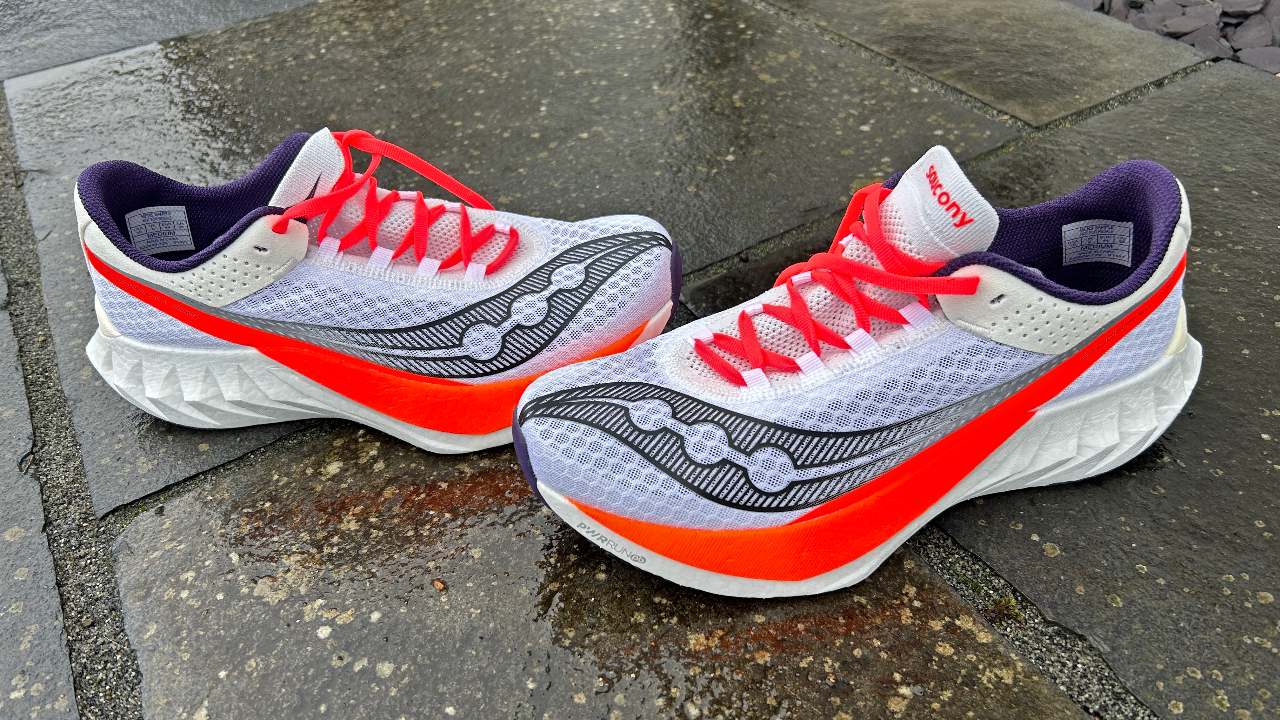
The Saucony Endorphin Pro 3 was one of the best carbon plate running shoes, but after Saucony followed it with the Endorphin Elite—a more aggressive and expensive racing shoe—it’s easy to now see the Pro as a second-tier racing option. I think this would be a mistake.
The Saucony Endorphin Pro 4 is an excellent racing shoe and while its ride is not as bouncy as some shoes, it’s still quick—and I think it will work well for a wider range of runners than many other super-shoes, including the Saucony Endorphin Elite.
Saucony Endorphin Pro 4: Price And Availability
The Saucony Endorphin Pro 4 launched in February 2024 and costs $225 from Saucony US and £230 from Saucony UK. That’s the same price in the US as the Endorphin Pro 3, but a £20 rise in the UK. Even with that rise, the Endorphin Pro 4 is cheaper than most carbon plate running shoes including the Endorphin Elite, which costs $275/£280.
How I Tested This Shoe
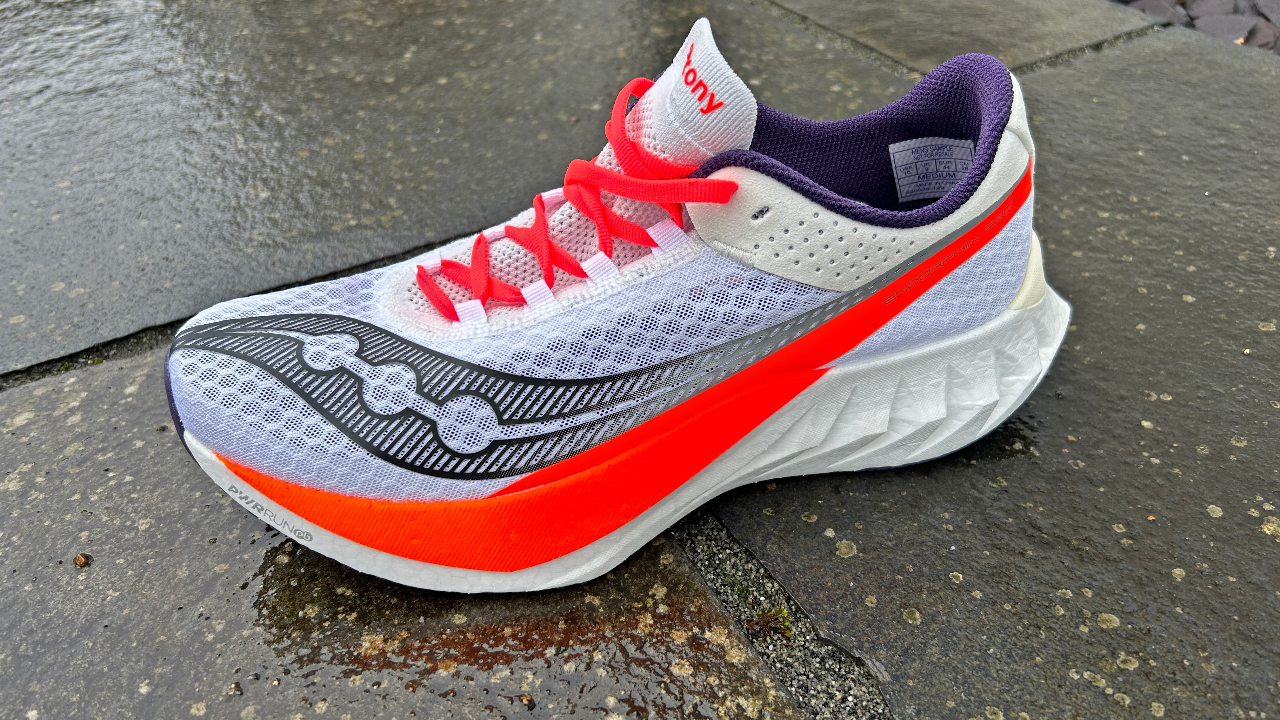
I’ve run 32 miles in the Endorphin Pro 4, most of which were done in two long workouts during marathon training. I have also tested every generation of the shoe to date, along with the Saucony Endorphin Elite and most of the best carbon plate running shoes from other brands.
Design And Fit
The main update to the Endorphin Pro 4 is its new dual-density midsole, which combines the two foams found in the Endorphin Pro 3 and Endorphin Elite. The top layer of the Pro 4’s midsole is made from the firmer, bouncier PWRRUN HG foam from the Elite, while the bottom layer is PWRRUN PB. A full-length carbon plate runs through the midsole.
The shoe still has the same stack height as the Pro 3 (39.5mm at the heel, 31.5mm at the forefoot, for an 8mm drop) but Saucony seems to have widened the base of the shoe at the heel. It is a little heavier, at 8.2oz/233g for a UK size 9, compared with 7.65oz/217g for the Pro 3.
There is a new sockliner in the shoe, which is designed to add more bounce to the ride. The Endorphin Pro 4 still uses Saucony’s Speedroll rocker geometry, which is designed to speed the transition onto your forefoot. The outsole has been changed to have a lattice pattern, with rubber covering the forefoot and sections of the heel, and a large cut-out in the center of the shoe that helps to reduce weight. The shoe gripped well for me during fast runs on wet roads.
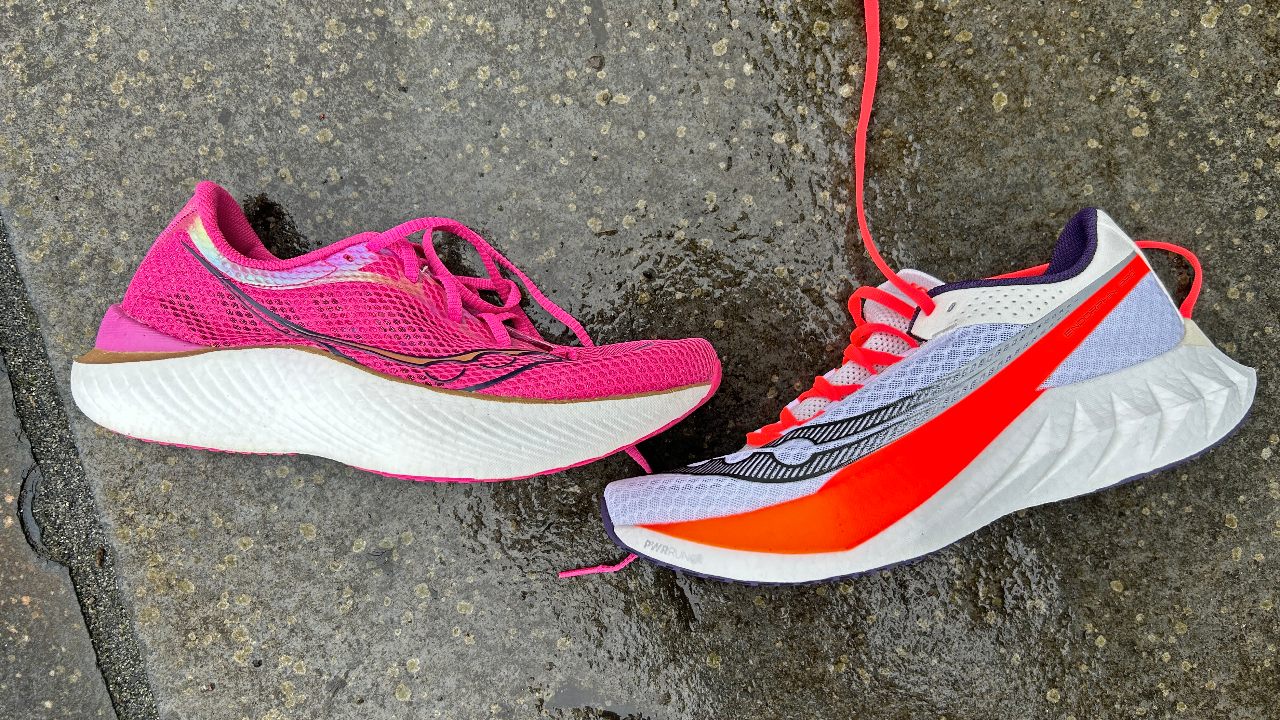
Saucony has updated the upper on the shoe, which is a lightweight mesh material with minimal padding around the heel. It’s comfortable and holds the foot securely for fast running without creating irritation. I found the shoe fitted well in my usual running shoe size, the same one I’ve used for all past versions of the Endorphin Pro.
Running Performance
Given its relatively low price, and the fact that the Elite is above it within Saucony’s range of racing shoes, the Endorphin Pro line has lost a little of its luster as a top carbon racing option. The Pro 4 actually feels quite natural on the foot and isn’t as bouncy as many carbon shoes, which would seem to cement the idea that it’s not a rival for the best shoes.
However, the shoe’s performance during testing quickly dispelled the idea that it’s not a carbon contender. The ride may not be as springy as shoes like the Nike Alphafly 3 or New Balance FuelCell SC Elite v4, but it’s smooth and efficient thanks to the Speedroll rocker. The addition of PWRRUN HG foam into the midsole makes the Pro 4 more responsive than its predecessor.
I loved the Endorphin Pro 3 but, over extended testing, I found that the forefoot lost some of its bounce during longer runs. That isn’t the case with the firmer PWRRUN HG foam in the Pro 4. Crucially, moreover, the new midsole doesn’t make the ride as harsh as that of the Endorphin Elite, which I found fast but also too firm for my taste because I experienced forefoot discomfort on any hard run in the shoe over 10K.
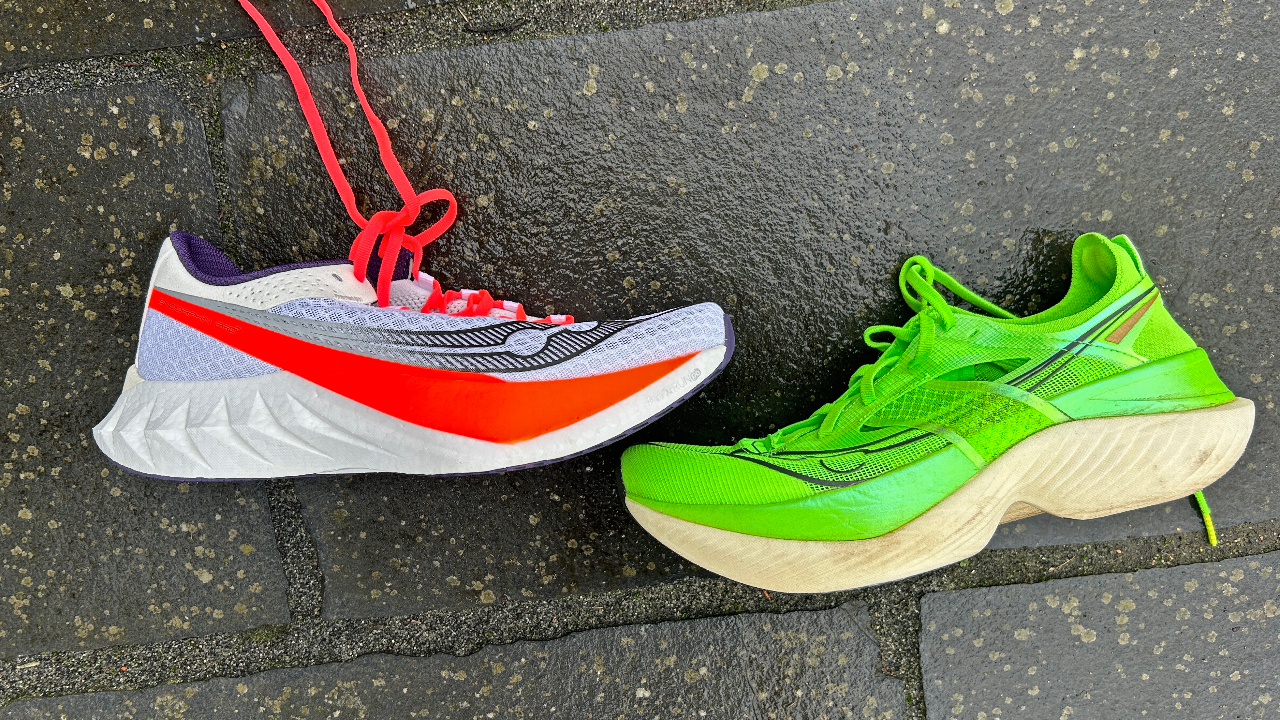
I’ve done two hard workouts in the Endorphin Pro 4. The first was a session with 20 x 60sec on/60sec float (still running hard, but not as hard) followed by four miles at 5min 40sec/mile pace. The second was longer still, doing 10K at 5min 38sec/mile pace, then a parkrun, then another five miles at 5min 38sec/mile pace.
In both workouts the shoe was comfortable and quick. In the first I was falling apart halfway through the four-mile tempo section, but the fluid ride helped me to get back into a groove and finish strong. I ran a 16min 44sec parkrun in the middle of the second workout, and rolled through the other sections—which were at my goal marathon pace—feeling reasonably controlled.
The shoe performs like a top carbon shoe at a significantly lower cost, and will suit a lot of runners who don’t like the bouncier, more unstable rides of other options. It may not be the carbon racer that feels the most like a super-shoe, but the Endorphin Pro 4 delivers when it matters. It’s also a more versatile and comfortable carbon shoe than others in that it feels good at slow paces as well and can be used for a range of training.
Is The Saucony Endorphin Pro 4 Worth It?
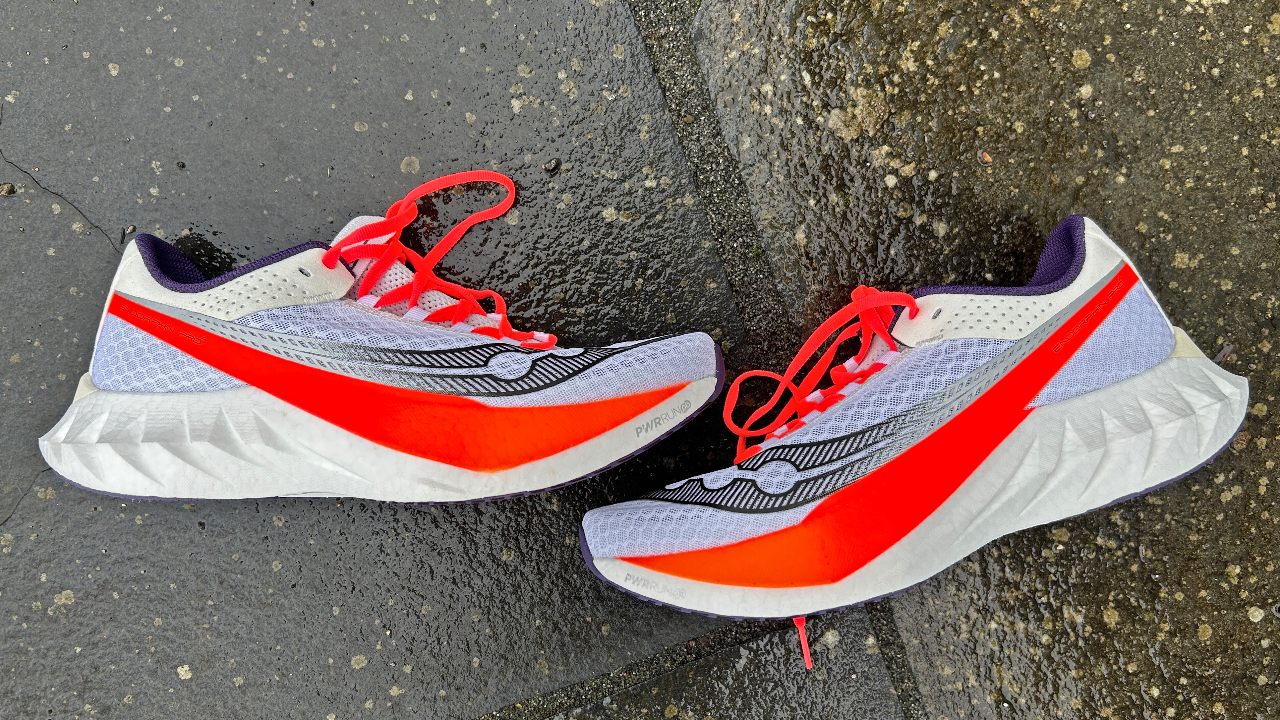
I think the Endorphin Pro 4 is a great racing option that will suit a variety of runners, and it may well work better for those racing at slower paces than other super-shoes, which are more aggressive and unstable. I prefer it to the Endorphin Elite, which might have more raw pace but its aggressive rocker doesn’t suit my gait. I found it uncomfortable over long distances. I also think the Endorphin Pro 4 is an upgrade on the Pro 3, though the latter is still a good racing shoe with similar characteristics, and it’s well worth looking out for in sales.
When picking my top racing shoe for my upcoming PR attempt at the London Marathon, I’ll still opt for the Nike Alphafly 3 or Nike Vaporfly 3 because they’re lighter. I find them quicker and, in the case of the Alphafly 3, bouncier. There are other carbon shoes I consider bouncier and more propulsive than the Endorphin Pro 4 too—but I think it’s as good as most. And just because it’s cheaper than most super-shoes absolutely doesn’t indicate that it’s inferior to them—the appealing price is a genuine bonus.







